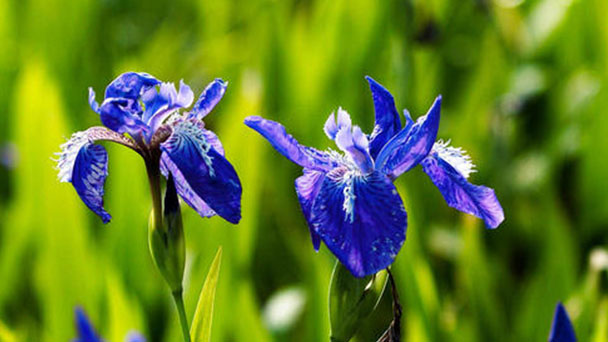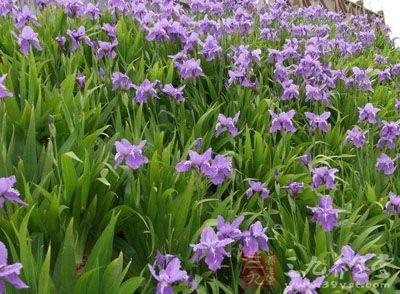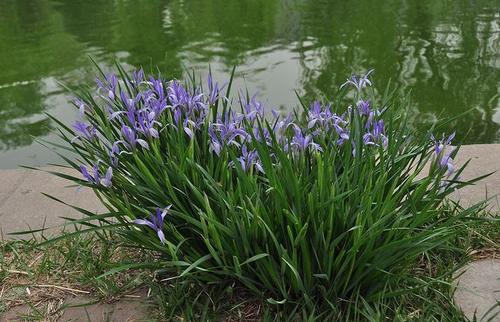How to grow and care for Iris lactea
Written by Maggie
Aug 24 2021

We are all familiar with Iris lactea, and it is widely distributed in the region of our country. Iris lactea is favored by people for its high ornamental value and medicinal value. It used to be more wild and is still grown by many people. How to grow Iris lactea? And how to care for Iris lactea when growing? Let's look together.

Soil care for growing Iris lactea
Iris lactea will not grow well in acidic soils, so iris lactea should be grown in a clay loam rich in humus, or an alkaline soil mixed with calcareous substance. Before growing, the soil should be fully ploughed, and applied with decompose compost and a small amount of bone meal, plant ash and so on as the base fertilizer. Growing iris is unfavorable additionally too deep, rhizomes should press tightly.
Temperature care for growing Iris lactea
The optimum growth temperature of Iris Lactea is 15 ~ 17℃, and it likes a humid environment with sufficient sunlight. However, if the light is too strong, shading treatment should be properly carried out. If the humidity is too high, the humidity can be reduced by heating and ventilation.
Watering care for growing Iris lactea
Iris Lactea after planting to pour a permeable, after watering according to the wet and dry condition of the soil, generally with the soil slightly dry as well. Do not make the soil water or long-term too wet, so as not to cause root rot or disease. To keep the plant looking good, wash the leaves of the plant.
Fertilization care for growing Iris lactea
Iris lactea in the spring germination growth to flowering should be applied 1 ~ 2 times before the decay of the thin cake fertilizer water or compound fertilizer. After the flower wither, it is best to apply 1 time liquid fertilizer.

Transplanting care for growing Iris lactea
For Iris lactea to grow and thrive quickly, the plant should be transplanted in September and then covered with plastic in November when it is a bit cold to keep warm. During the fall and winter growth of Iris lactea, spotty leaf spots often occur, as long as the plant ash spread control can be .In the transplanting, use plastic cover, until after the Tomb-sweeping Day to uncover the plastic film. Let Iris lactea naturally grow on it, but we should pay attention to fertilization and watering management.
Harvesting care
Because artificial cultivation can enable the mass production of Iris lactea, and Iris lactea itself is a vegetable that can be harvested all the year round. It can be harvested continuously for many years after being planted once, so it should be harvested on time. Attention to harvesting. After each harvest, nitrogen fertilizer should be added in time to ensure sufficient nutrients.
Be careful when picking shears. Be sure to keep the short shoots, as well as the pruned shoots, stored in a dank earthenware jar, then sprayed with fine water to prevent wilting, and edible.

Latest Updated
- Benefits of Bugleweed - 7 Science-backed Health Benefits
- Bugleweed Dangers & Side Effects - Is It Poisonous?
- How to Plant Evergreen Trees - What You Should Know
- When to Plant Evergreens - Grow Guide for Evergreen Trees
- 12 Wonderful Evergreen Shrubs for Your Garden
- 12 Popular Evergreen Plants with Pictures for Beginners
- When And How To Prune A Lilac Bush Like a Pro
- How to Grow & Care for Lilac Vine (Hardenbergia Violacea)
- Japanese Lilac Tree (Syringa Reticulata) Care & Propagation Guide
- Shumard Oak Pros and Cons - What to Know
Popular Articles
- Winter maintenance of Antirrhinum Majus
- How to Grow Terminalia Mantaly Tree
- How to Grow and Care for Crossostephium Chinense
- How to grow Antirrhinum Majus in spring
- Peristeria Elata (Dove Orchid) Profile: Info & Care Guide
- Underwatered Snake Plant (Sansevieria Trifasciata) - Signs And How To Fix
- How to Care for Brazilian Jasmine Plant (Mandevilla Sanderi)
- How to Grow & Care for Graptopetalum Purple Delight in Summer
- Rosa Chinensis (China Rose): Plant Growing & Care Tips
- How to Care for Baby Sun Rose (Aptenia Cordifolia)